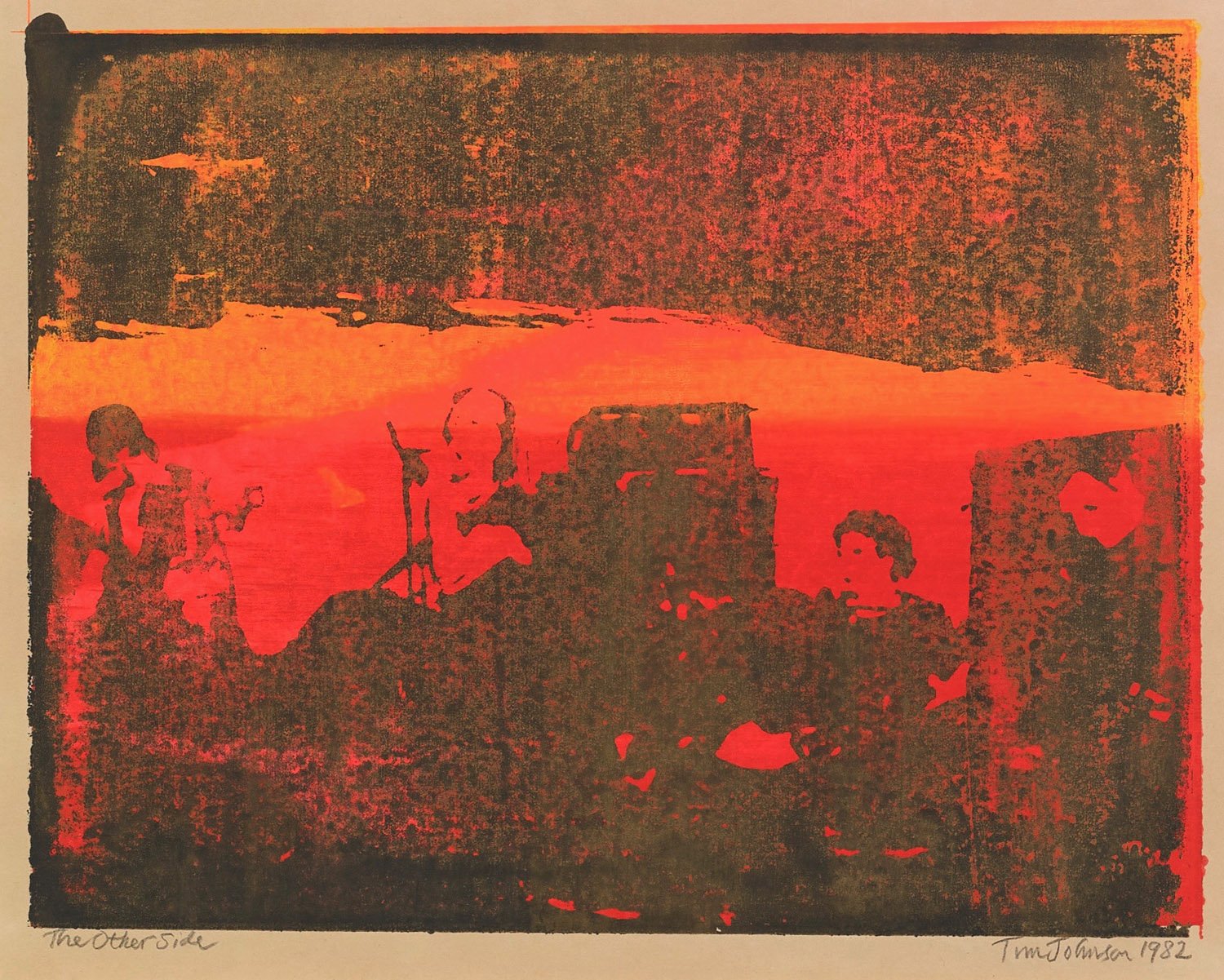Tim Johnson
The Other Side, 1982
screenprint, printed in colour inks, from multiple stencils on paper
19.5 x 24.5 cm (print size)
signed and dated ‘Tim Johnson 1982’ (lower right) and inscribed with title ‘The Other Side’ (lower left)
Provenance
The artist
Vivien Johnson, Sydney
unknown edition
Another from the edition with different colouration is in the National Gallery of Australia collection
This print depicts The Other Side, a shortlived band from 1978-79 formed by singer Rob Younger and drummer Rob Keeley from Radio Birdman, along with Clyde Bramley on bass and Charlie Georges on guitar, both from The Hellcats.
“Tim Johnson’s interest in punk rock is manifested in prints, paintings, texts, photographs, super 8 films, musical performances, collected recordings and ephemera. In a concentrated series of works made between 1979 and 1983, Johnson depicted Australian, English and American punk musicians and fans using his own photographs or pictures from the music press.” (Chris McCauliffe, Tim Johnson, Art Gallery of New South Wales, Sydney, 2009, exh.cat. p.20)

‘…one has to work in a symbolic space, perhaps like the Buddhist Pure Land, or the mandala itself, to create an illusory reality or a virtual reality in which the space that the artwork occupies is revealed to the audience that can read enough signs to unravel its meanings.’ (Tim Johnson, quoted in Wayne Tunnicliffe, ‘Pure Land Painting’ in Tim Johnson: Painting Ideas, Art Gallery of New South Wales, Sydney, p. 58.)
Tim Johnson’s paintings are fascinating cross-cultural documents that embody the inherent multiculturalism within contemporary society. Born and trained in Sydney, Johnson began as a conceptual and performance artist, establishing the Inhibodress art space in Sydney along with Mike Parr and Peter Kennedy. In 1975-76, Johnson travelled to North and South-East Asia, where Buddhist spirituality and culture left an indelible impression.
Johnson first travelled to Papunya, Northern Territory, in 1980, where he learned dot painting with Aboriginal artists including Clifford Possum Tjapaltjarri. After seeking permission to continue incorporating indigenous techniques within his paintings, Johnson developed a visual vocabulary that placed the vibrancy of the dot alongside symbols and icons of Asian religion and folklore. The resultant paintings are spiritual landscapes, testaments to Johnson’s connections to different aesthetic traditions around the world. He and his then-wife, the writer and sociologist Vivien Johnson, were instrumental in introducing these Central Australian artists to the art market and increasing the Australian public's awareness and appreciation of First Nations art and culture.
More recently, his contemplation of mythology has led Johnson to popular culture, with symbols from science fiction, video games and Japanese anime being incorporated alongside traditional images of the Buddha or the lotus flower. The common feature of these disparate influences is the sense that there is a shared consciousness of images and symbols from all cultures that makes sense to audiences from all backgrounds.
Tim Johnson has worked and exhibited for almost five decades, both alone and collaboratively with the likes of Karma Phuntsok, My Le Thi and Clifford Possum Tjapaltjarri. In 2009-10, a major solo exhibition, Tim Johnson: Painting Ideas toured the Gallery of Modern Art, Brisbane, the Art Gallery of New South Wales, Sydney, and the Ian Potter Museum of Art, Melbourne. He showed in 2012 at The Unseen, the Fourth Guangzhou Triennial, China, and has been included in three Biennales of Sydney.